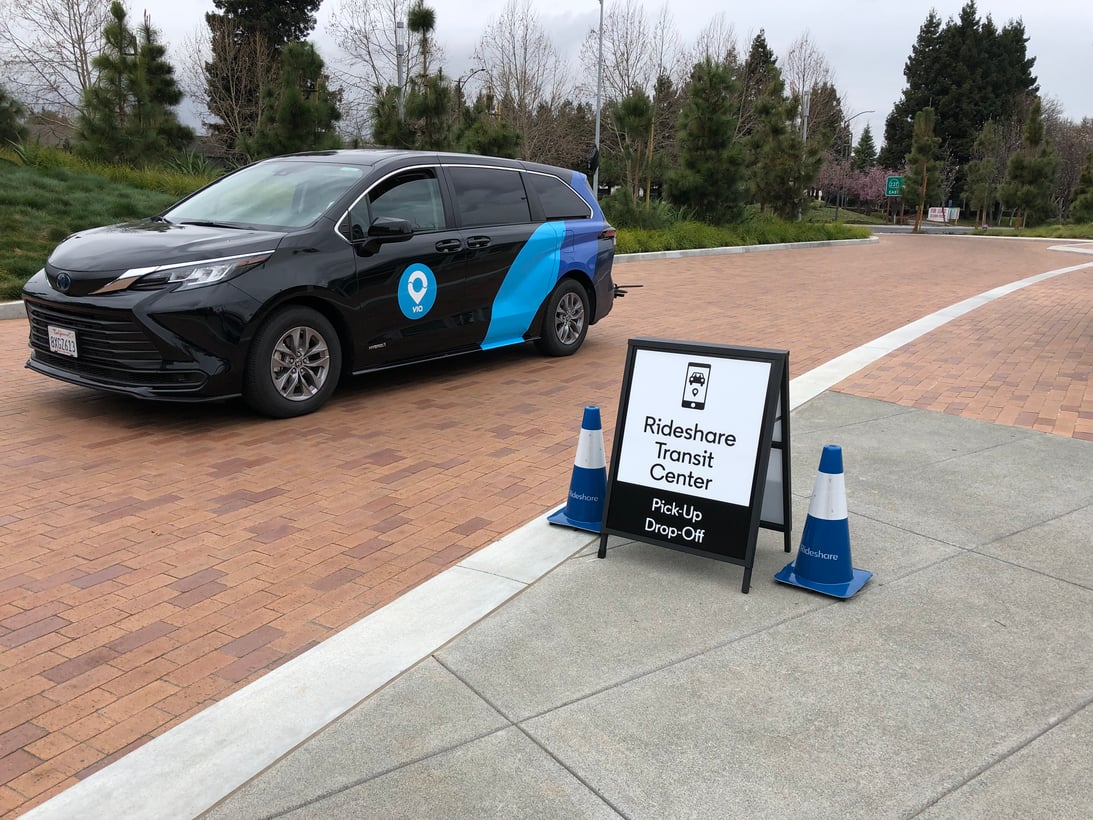Hybrid work is here to stay. That’s the message we’ve been hearing loud and clear as employees cherish their newfound freedom to choose how and where they work. But when employees do come into the office — to attend in-person meetings, use specialized equipment, or enjoy a team lunch — they face all-new transportation challenges.
Declining overall public transit ridership has pushed many transit agencies to cut or minimize frequency on their fixed-route bus and train lines, minimizing the efficacy of employer-subsidized transit passes. Though long a Bay Area staple, employer-operated fixed-route shuttles are only efficient if large numbers of employees commute on the same days, at the same times, from the same places. At Via, we’ve been working with employers to implement new corporate transportation solutions that are well-adapted to a hybrid work model — and flexible enough to meet new challenges in the future. Get up to speed with Via's corporate shuttle solution below.
At the Association for Commuter Transportation (ACT) conference in August, we hosted several of our corporate partners for an exciting panel on the future of work transportation. Here are our top five insights that emerged from that conversation:
1. A complete solution may involve multiple transit modes.
One-size no longer fits all in corporate transportation. If a company previously offered fixed-route shuttle service to or from a downtown core, it now might offer a mix of long-range fixed-route, on-demand microtransit, and pre-booked shared rides. As employees have relocated as a result of work-from-home or hybrid work policies, employers often have less of a clear idea of where high concentrations of employees actually live — and can use demand-responsive programs to identify and address new commuting patterns amongst their teams. Fixed shuttles might make sense along new routes, or on-demand or pre-booked shared trips might be sufficient to handle an overall reduced demand.
2. Sustainability is a renewed priority for employers — and their employees.
As companies all over the country are renewing their commitment to ESG priorities, offering a sustainable commute solution has taken on greater importance. Since the COVID-19 pandemic led to a resurgence in single-occupancy vehicle (SOV) travel, corporations have responded to changing travel patterns and preferences by offering flexible transit programs — often with plug-in hybrid or electric vehicles — rather than expanding parking structures. Indeed, some companies face new municipal regulations that require them to reduce their employees’ reliance on SOV travel before they are permitted to expand the footprint of their campuses.
3. Smaller campuses need transit solutions, too.
Headline-making corporate transport has typically been the province of large companies with sprawling, suburban campuses the size of small towns. But companies with smaller campuses have recently begun offering alternatives to SOV commuting as well. One of our panelists noted that even at these locations, parking availability was a major concern among employees — and offering an on-demand transit solution for those living nearby, but outside walking or biking distance, significantly reduced strain on campus infrastructure.
4. Corporate transportation beyond the campus.
We typically think of corporate transportation as a means to commute to work, or perhaps travel between buildings on a large campus. But some companies are thinking bigger, and leveraging their transport systems to connect employees to shops, restaurants, and entertainment in the campus vicinity. One panelist noted that her company’s campus location made it difficult for teams to walk to get lunch or go to happy hours, and that on-demand transit was a promising solution for facilitating off-campus team-building in a suburban environment.
5. Flexibility is not optional.
Our panelists agreed that flexibility was the top priority in this new return-to-work environment. Companies are looking to offer transportation solutions that work for employees who travel at irregular times, outside the bounds of a traditional rush-hour, and who come into the office anywhere between 1-5 times per week. They are also looking for modes that can accommodate larger-scale changes in ridership over time: if more employees start coming back to work, or more employees go fully remote, employers want to avoid needing to rethink their transit system all over again.




